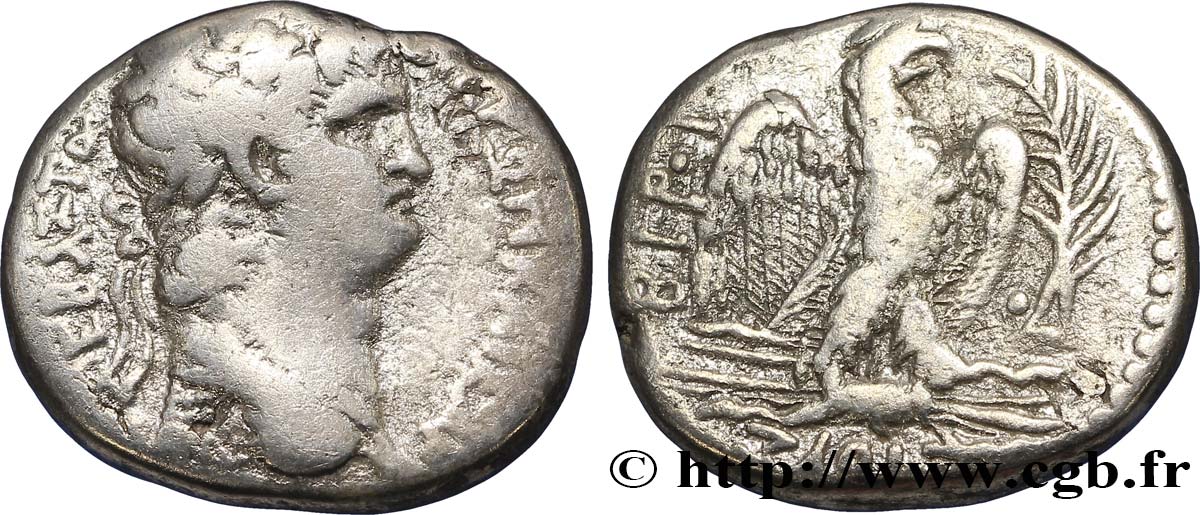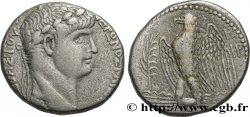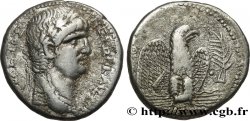E-auction 113-60689 - bpv_297330 - NERO Tétradrachme syro-phénicien
You must signin and be an approved bidder to bid, LOGIN TO BID. Accounts are subject to approval and the approval process takes place within 48 hours. Do not wait until the day a sale closes to register. Clicking on « bid » constitutes acceptance of the terms of use of cgb.fr private e-auctions.
Bids must be placed in whole Euro amounts only. The sale will start closing at the time stated on the item description; any bids received at the site after the closing time will not be executed. Transmission times may vary and bids could be rejected if you wait until the last second. For further information ckeck the E-auctions F.A.Q.
NO BUYER'S FEE.
NO BUYER'S FEE.
| Estimate : | 170 € |
| Price : | 65 € |
| Maximum bid : | 91 € |
| End of the sale : | 15 June 2015 16:03:30 |
| bidders : | 6 bidders |
Type : Tétradrachme syro-phénicien
Date: an 10 / 112
Mint name / Town : Antioche, Syrie, Séleucie et Piérie
Metal : silver
Diameter : 25 mm
Orientation dies : 12 h.
Weight : 14,22 g.
Coments on the condition:
Flan très court
Catalogue references :
Predigree :
Cet exemplaire, qui provient de la trouvaille dite de Banias, est le 0090_050
Obverse
Obverse description : Buste lauré de Néron à droite avec l'égide sur le cou (O*4) ; un globule sous le buste.
Obverse legend : NERWN KAISAR - SEBASTOS, (Nerwn Kaisar SebastoV).
Obverse translation : (Néron césar auguste).
Reverse
Reverse description : Aigle debout à droite sur un foudre ailé, les ailes déployées ; dans le champ à droite, une palme verticale, accostée d’un globule.
Reverse legend : ETOUS / BIR.I.
Reverse translation : An 112 de l’ère césarienne - An 10 du règne.
Commentary
On déplore, pour analyser ce type, le centrage médiocre quasi systématique de tous les exemplaires connus, dans un sens ou un autre. Sur certains, on repère nettement un globule sous le buste, sur d’autres un globule à six heures dans le grènetis du revers, sur tous, heureusement, un point dans le champ du revers et un style exceptionnel pour le portrait du droit.
Outre sa qualité, celui-ci nous rappelle le visage bien connu du Néron des deniers et sesterces de l’atelier de Rome, dans la plénitude de ses formes.
Les trois dernières années de frappe pour Néron à Antioche ont certainement produit les plus grands modules de portraits de qualité exceptionnelle sur argent de toute la numismatique romaine.
Dans la base TSP maintenue par Michel Prieur, cent quarante-deux exemplaires sont maintenant répertoriés.
Outre sa qualité, celui-ci nous rappelle le visage bien connu du Néron des deniers et sesterces de l’atelier de Rome, dans la plénitude de ses formes.
Les trois dernières années de frappe pour Néron à Antioche ont certainement produit les plus grands modules de portraits de qualité exceptionnelle sur argent de toute la numismatique romaine.
Dans la base TSP maintenue par Michel Prieur, cent quarante-deux exemplaires sont maintenant répertoriés.








 Report a mistake
Report a mistake Print the page
Print the page Share my selection
Share my selection Ask a question
Ask a question Consign / sell
Consign / sell
 Full data
Full data



